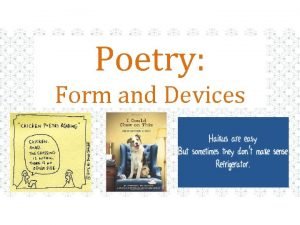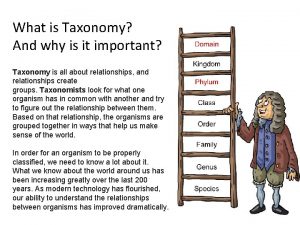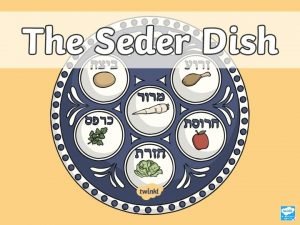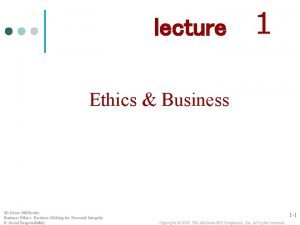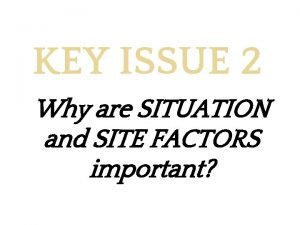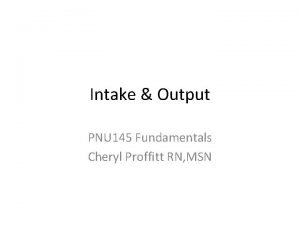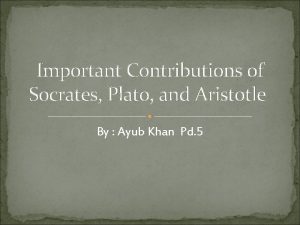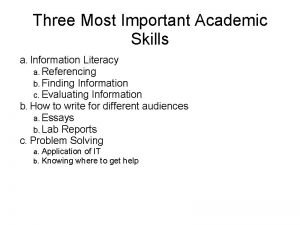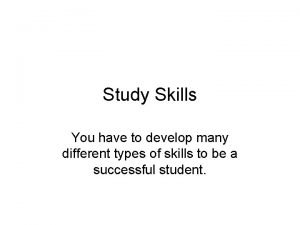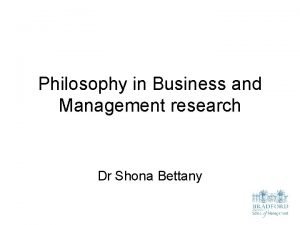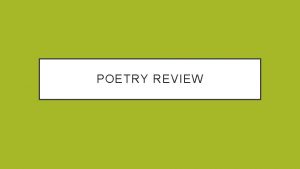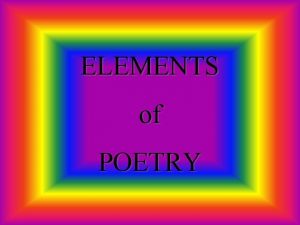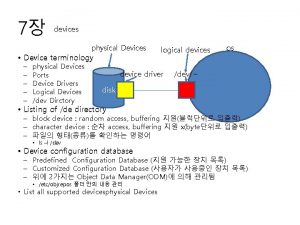Poetry Form and Devices WHY IS POETRY IMPORTANT


















- Slides: 18

Poetry: Form and Devices

WHY IS POETRY IMPORTANT? • Poetry takes a simple concept and makes it more powerful and beautiful • Which one of these poems is better? Why? The sky is blue. There are clouds up in the sky. I want to fly into the sky, I like the wind. --Ms. Sundt

WHAT IS FIGURATIVE LANGUAGE? • Figurative language presents ordinary things in fresh ways, communicating ideas that go beyond words’ordinary meanings. • HERE ARE SOME EXAMPLES…

FIGURATIVE LANGUAGE: IT’S LIKE A SIMILE – a comparison of two things using the words like or as. Examples of simile: • “Life is like a box of chocolates. ” • “The girl is as beautiful as a rose. ” • “The willow is like an etching…”

FIGURATIVE LANGUAGE: IT IS A METAPHOR – a comparison of two things without using the words like or as. Examples of metaphor: • “My father is a tall, sturdy oak. ” • “The hotel is a diamond in the sky. ” • “The moon is a balloon floating above us”

FIGURATIVE LANGUAGE: PERSONIFICATION – the giving of human qualities to an animal, object, or idea. Examples of personification: • “Hunger sat shivering on the road. ” • “The flowers danced on the lawn. ” • “The sea is calling out to me. ”

FIGURATIVE LANGUAGE: HYPERBOLE - an exaggerated statement used to make a point. Examples of hyperbole: • “I have a million hours of homework!” • “I could sleep for a year. ” • “This book weighs a ton. ”

FIGURATIVE LANGUAGE: IMAGERY -Vivid descriptions used to produce mental images (appeal to the five senses). Examples of imagery: • “My fingers shook, and a bead of sweat ran down my back as I awaited my math test. ” • “The sun’s golden rays peaked over the mountaintop. ”

WHAT IS A SOUND DEVICE? • The effect of a poem can depend on the sound of its words. • HERE ARE SOME EXAMPLES…

SOUND DEVICE: SOUNDS LIKE ONOMATOPOEIA - the use of words whose sounds suggest their meanings. Examples of onomatopoeia: • “The bang of a gun. ” • “The hiss of a snake. ” • “The buzz of a bee. ” • “The pop of a firecracker. ”

SOUND DEVICE: REPETITION - the repeating of sound, words, phrases or lines to emphasize an idea or convey a certain feeling. Examples of repetition: • “Sing a song full of faith that the dark past has taught us, Sing a song of the hope that the present has brought us…” • “I think I can, I think I can…”

SOUND DEVICE: ALLITERATION - repetition of SOUNDS at the BEGINNING of at least two words in a line of poetry. Example of alliteration: Examples of Alliteration • “the frog frolicked frivolously on the forest floor. ” • “She sells sea shells by the sea shore. ” • “…struck out by a steed flying fearless and fleet…”

SOUND DEVICE: CONSONANCE - repetition of CONSONANT SOUNDS at the BEGINNING, MIDDLE or END of at least two words in a line of poetry. Examples of Consonance Repeating the “sh” sound in the words: “shush, ” “wish, ” “sharp, ” “cushion” and “quash”

SOUND DEVICE: ASSONANCE - repetition of VOWEL SOUNDS at the BEGINNING, MIDDLE or END of at least two words in a line of poetry. Examples of Assonance • Repeating the “eh” sound in the words: “crescent, ” “flesh, ” “extending, ” “medicine” and “death”

SOUND DEVICE: I RHYME ALL THE TIME AND I GUESS IT SOUNDS FINE… - repetition of sound at the ends of words. (Rhyme occurring within a line is called internal rhyme. Rhyme occurring at the end of a line is called end rhyme) Rhyme Scheme – the pattern of end rhyme in a poem. Lines that rhyme are given the same letter. Example of internal rhyme, end rhyme, and rhyme scheme: • I looked at the shell in the ocean a • I looked at the bell in the sea, b • I noticed the smell and the motion a • Were very peculiar to me. ” b

How is assonance different from rhyme? • Rhyme is more specific. • Not only are there repeating vowel sounds (orange, core, fork), but the entire last part of the words are the same (fork, pork, dork) • If you’re asked to identify sound devices, be sure to be specific: is this assonance or rhyme?


Practice Writing the Following Poems: � 2 Limericks � 2 Haiku � 1 Color Personification Poem � 1 Nature Poem � 1 “What I’m Made Of” Poem
 Hey bye bye
Hey bye bye Why is it important to test installed equipment and devices
Why is it important to test installed equipment and devices Assonance sound device examples
Assonance sound device examples Dont ask
Dont ask From most important to least important in writing
From most important to least important in writing From most important to least important in writing
From most important to least important in writing Least important to most important
Least important to most important What is taxonomy and why is it important
What is taxonomy and why is it important Shat is passover
Shat is passover What is ethics and why is it important
What is ethics and why is it important Why are situation and site factors important
Why are situation and site factors important How to calculate ice chips intake
How to calculate ice chips intake Brightest student of plato
Brightest student of plato Milady chapter 23 review questions
Milady chapter 23 review questions What are study skills and why are they important
What are study skills and why are they important What are study skills and why are they important
What are study skills and why are they important What is research philosophy and why is it important
What is research philosophy and why is it important Macromolecule with nitrogen
Macromolecule with nitrogen What is email etiquette and why is it important
What is email etiquette and why is it important


